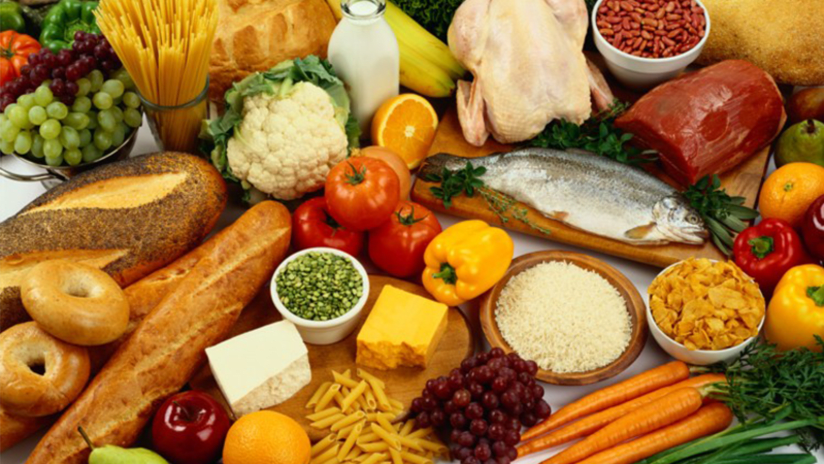Today most of us already have a general idea about what constitutes healthy eating.
However, stay-at-home isolation in the midst of the coronavirus pandemic adds a whole new twist to the theme. Between the lack of activity, limited takeout options and infrequent supermarket runs, It just takes a lot more work to do the healthy eating thing these days.
So we tapped into a professional MLS sports dietitian, the Houston Dynamo’s Brett Singer, to share how he’s thinking about nutrition these days and what he’s advising Dynamo players. Plenty of it can be applied by the non-athletes out there.
Getting the basics down pat
While some Houston Dynamo players seek out more specific details on food ideas, recipes and portions, most are just looking for a basic structure (how many meals?) and format (what should the meals look like?). That way each player can then personalize their plan based on their own personal food preferences and cooking strategies.
“If you can guide them and provide a framework as to what a meal should look like so they’re including as much of the good-quality foods, they’ll be less hungry every day and therefore less apt to snack and over-indulge on non-healthy foods,” says Singer who works at Houston’s Memorial Hermann IRONMAN Sports Medicine Institute with junior high, high school and collegiate athletes.
“Now with the reduced level of activity, it’s just changing the portions and the framework of the meals slightly,” Singer said. “You’d like to really keep your routine as best as you possibly can. That means eating meals at a similar time of the day and having the same number of meals and snacks in a day. And if you can track it, that’s helpful.”
Singer notes the reduction in activity given we’re all homebound means we’re likely using fewer carbohydrates. So we’re needing to consume less of them and instead should increase the fruits and vegetables — more of the nutrients — on our plate.
The gameplan
With that general framework in place, the tactics follow.
“Most adults should be having at least three to five meals and snacks a day that contain some amount of protein,” Singer says. “That protein amount varies from person to person depending on the size of the individual and the goals that they have. But for a lot of adults that’s going to be somewhere between 20 and 40 grams of protein [every meal].”
Singer talks about meals consisting of three main elements: (1) color (i.e. fruits or vegetables), (2) protein and (3) carbohydrates (starch or whole grain). While on tougher training days and matchdays, players are tipping the balance in favor of more carbs for calories, the adjustment in a stay-at-home environment means a little less of the starch and more color (fruits & vegetables).
That’s the simple formula. No need to overthink meals. In fact, Singer says “it doesn’t have to be overly technical to make for a good, high-quality meal.”
What to eat
There are many different sources for the protein part of the meal, and they also vary depending on whether an individual adopts a vegetarian, vegan or pescatarian diet.
In addition to animal-based proteins — Singer notes animal-based sources like dairy, eggs, meat, fish are typically higher-quality protein sources and more impactful for the skeletal muscles — there are several others. Plant-based soy is a high-quality protein source as well as a combination of others: beans, legumes, nuts, nut butters, peas and whole grains. Many players opt for eggs or dairy for breakfast and meat or fish for lunch and dinner.
Snacks are just as important. Singer emphasizes this point since there is often a lengthy span of time between meals.
“I like my athletes to be consuming a protein source every 3 to 5 hours or so during the day, if possible, and that includes snacks,” Singer says.
He indicates snacks — greek yogurt, hard-boiled eggs and fruit, a sandwich or a fruit smoothie — are a good opportunity to consume protein and nutrient-dense color (fruits and vegetables) in order for the skeletal muscle to generate a positive response to the protein.
Another big priority for Singer: food safety. He shares information with players about the appropriate storage life for foods in order to mitigate risks that can arise. His general recommendation to them: “When grocery shopping, try to shop for the week as opposed to shopping for months worth of groceries. And if you’re going to buy extra portions, make sure they’re stored appropriately.”
Keeping tabs
Singer does not want his players obsessing over weighing themselves every day, but the scale can be a simple tool to understand whether the diet is working for your personal energy requirements. We’re all familiar with this concept: You’re overfueling if you’re gaining weight and underfueling if you’re losing it.
According to Singer, the average adult can hop on the scale on a weekly or monthly basis to monitor how things are tracking.
This takes on greater importance when the heat and humidity — and sweat rates — begin to rise. Players who work out alone will need to make sure they know how much to replenish based on what they lose during exercise.
“It’s helpful for players to monitor their weight from a sweat side of things,” said Singer, who noted temperatures in Houston have recently hit 90 degrees. “If someone loses two pounds during a workout, that means they’ve lost 32 ounces of fluid … it’s helpful to identify their hydration needs during exercise sessions.”
Looking to dig deeper on diet and nutrition? The CPSDA (Collegiate & Professional Sports Dietician Association) has educational resources and handouts that are also sports specific, and the US Olympic Committee’s sports nutrition team has recipes and information from recovery to hydration.
And the next time you walk into your kitchen and find yourself thinking through your food strategy for the day, know your favorite MLS players are probably in the same boat.
“We’re stuck in homes or apartments and it’s something the players are not accustomed to either,” Singer said. “They’ve had offseasons before, but this is not the same thing at all.”













